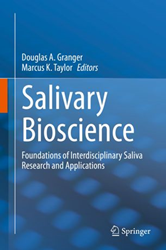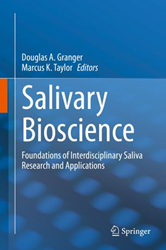
This book effectively and comprehensively chronicles the utility of oral fluid as a diagnostic specimen for use by clinicians and researchers worldwide…
CARLSBAD, Calif. (PRWEB)
April 14, 2020
“Salivary Bioscience Foundations of Interdisciplinary Saliva Research and Applications”, from Springer, provides the first comprehensive overview of a rapidly emerging field; interdisciplinary salivary bioscience. It serves as a foundational reference guide to the collection, analysis, and interpretation of salivary data, as well as its myriad applications in medicine, surveillance and public health. The ease and non-invasive nature of saliva collection makes it highly useful in diverse fields such as pediatrics, dentistry, neuroscience, psychology, animal welfare, and precision medicine. Featuring over 30 different teams of expert investigators from the salivary bioscience community, “Salivary Bioscience Foundations of Interdisciplinary Saliva Research and Applications” introduces students and scientists alike to the vast potential of saliva in both research and practice.
With the rapid adoption of salivary bioscience into a substantial number of interdisciplinary research fields, investigators are often challenged with keeping up with the latest comprehensive knowledge around the science of saliva. Now, “Salivary Bioscience: Foundations of Interdisciplinary Saliva Research and Applications” will educate readers on the current state of the field, as well as guide researchers on the improvements in research methods, technology and fundamental knowledge required so that they can maximize their benefits from incorporating salivary bioscience into their study. As salivary bioscience continues to mature and shape the multidisciplinary scientific landscape at an exponential rate, “Foundations of Interdisciplinary Salivary Bioscience” is an indispensable tool for a state-of-the-art guide to salivary bioscience research. Along with the dissemination of important milestones established by key opinion leaders in their respective fields, this book presents readers with expert guidelines for incorporating saliva into research studies, along with the application of common salivary bioscience theory and practice. Combined with prospective future directions, this publication further details a roadmap for advancing science. Now, researchers can confidently design studies around high-impact concepts, based on the compliance and application of the latest knowledge.
“This book effectively and comprehensively chronicles the utility of oral fluid as a diagnostic specimen for use by clinicians and researchers worldwide,” says Steve Granger, Ph.D., Salimetrics Chief Scientific Officer and co-author of Chapter 11 on assay methods and quality requirements for salivary diagnostics. Each chapter reviews the history, current status, methodological issues, challenges and future directions of specific fields by their respective key opinion leaders. Foundations also highlights the advantages and challenges associated with salivary bioscience research in real-word settings, policies, and gaps found in salivary bioscience across different industries.
Foundations begins with the evolving history of salivary bioscience and chronicles how saliva-based publications have been on the rise for the past 25 years. The history is followed by the anatomy and physiology of the salivary glands at a micro and macro level with technical information regarding saliva production and location. Then readers are presented with technical advice on saliva collection handling, saliva transport and storage, as well as important considerations that researchers should be aware of when designing a study. “This supplemental information also helps guide researchers in answering some of the more confusing questions, such as deciding between different saliva collection methods,” says Supriya Gaitonde, Ph.D., Salimetrics Senior Application Scientist and co-author of Chapter 11 on assay methods and quality requirements for salivary diagnostics. “By following astute scientific advice, investigators will now have a comprehensive background for successful study designs and scheduling.”
However, study design and sample integrity is just the beginning of building a successful study. Researchers must also consider analytical strategies and tactics to solidify the interpretation of their results. “Salivary Bioscience: Foundations of Interdisciplinary Saliva Research and Applications” also discusses advanced statistical analysis including multilevel modeling and latent variable modeling; better methods that have evolved to increase the value of salivary bioscience data. This book also presents the reader with knowledge that will enable investigators to know which methodologies best fit their study design. Not only does being aware of the advancing statistical methods in salivary bioscience increase the successful application of data, but it also allows researchers to think in a new and innovative way.
Today, questions are being answered with saliva that could have not been possible using traditional biological specimens. “Although advancements in technology and methods have been made, we’re just beginning to appreciate a small percentage of the value of what salivary bioscience can tell us about health and human behavior. Indeed, the last chapter here is only the beginning. Soon, proven methods of salivary bioscience research will translate into the tools that make salivary diagnostics indispensable,” says Dr. Gaitonde. “Of course, Salimetrics will be here to maintain the better methods that increase rigor and reproducibility throughout as we are committed to being the best partner for the next generation of salivary bioscience as well.”
Share article on social media or email:

